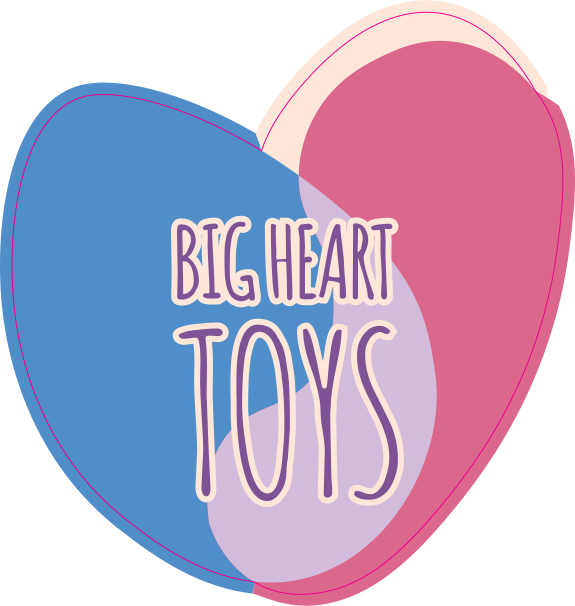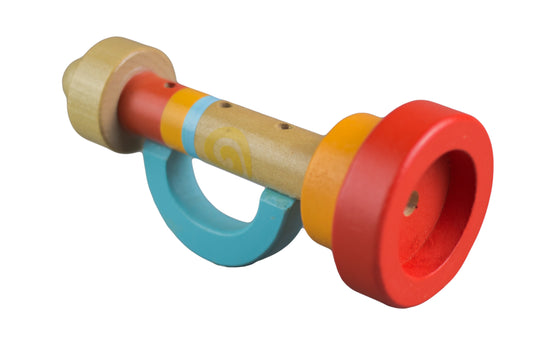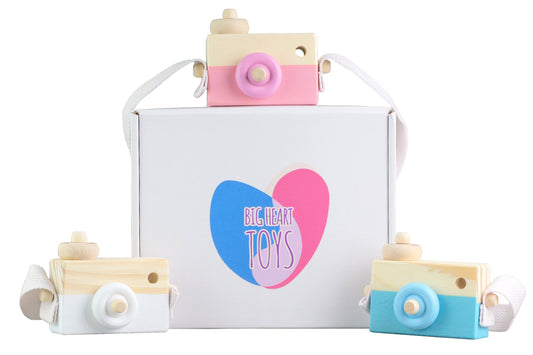We have all been there as parents when something goes wrong or is not what your child was expecting. The drama is unbearable. It is then in their storm that we need to remember the tools we were given and have as adults they do not have yet.
Our children feel emotions just as strongly as we do. This is another item on a caregiver’s to-do list: It is our job to teach these tools. There is no manual when it comes to parenting, but luckily, there are a few ways to help understand emotions and how to regulate them.
Join us as we discuss the ins and outs of childhood emotional regulation skills.
What Emotional Dysregulation Looks Like
Emotional dysregulation — also known as the meltdown. For some children, this can be an immediate response, while others have a slow build before the big breakdown. When meltdowns happen frequently, especially as children get older, it’s a good sign that they need a little help to learn self-regulation.
Meltdowns occur when the child feels overwhelmed, overexcited, tired, or doesn't know how to communicate their desires. Your child wanted the blue cup, not the yellow cup, and now the world is over, except it’s not.
After the meltdown, hand them their comfort object like a favorite stuffed animal and talk about why the meltdown happened. Then, you can help teach them a regulation tool that will help.
Why Teach a Child Self-Regulation?
A child can perform best in life when they know what their emotions are and how to handle them. Socially they will make more friends. They will have more confidence. Your child could even perform better academically. Self-regulation is the ability to behave and handle the thoughts and emotions felt when triggered or overwhelmed.
This makes self-regulation more of a struggle for children who are diagnosed with Autism, ADHD, or anxiety disorders. Their fight or flight is triggered more easily than others, and practicing self-regulation skills with them can really help improve their overall well-being.
Some signs that a child has reached their capacity to cope with big emotions before a meltdown are irritability, anxiousness, aggression, and impulsivity. When they show signs of dysregulation, it is the best time to remind them of the tools you will teach them before a meltdown progresses.
When Should I Teach My Child Self-Regulation?
You do not need to wait for daily meltdowns to start teaching self-regulation to your child. The skill of regulating emotions can be taught early on. This can be done in age-appropriate stages as they get older, in a scaffolding technique that builds upon what they already know and takes it one small tool at a time.
Stage 1: Toddler Understanding
Participating in imaginative play, especially with dolls or similar toys, can help form the basis for empathy and understanding.
A toddler can be shown different emotions with images and labeled with the appropriate emotion.
Games to play: show how “insert emotion here” feels. Give them an emotion, and they act it out!
Stage 2: Preschool - 7 years old, Empathy
Preschoolers can build upon their basic understanding of emotions and start to shape their behaviors to express big emotions in a healthy manner. They learn more about social expectations, like showing empathy and navigating more complex disagreements.
Reading books about emotions is helpful during this learning stage.
Stage 3: 8 Years on, Complex Emotions
When they are older, you can talk about complex emotions when more than one emotion is being felt at a time and the tools they have to work through them.
Teaching self-regulation is an ongoing lesson for your child. You can teach emotional self-regulation at any age, and the skills will help them. It is never too late to start helping your child learn about emotions and how to handle them.
How To Explain Emotions to Children
It is hard to assist a child with their emotions if they do not even know what emotions are. It helps them to know what they are and why emotions exist.
Here is a quick guide to the main emotions we feel and can feel strongly and why our bodies feel them.
Happiness:
This is felt to give one peace and harmony within ourselves. Happiness lets you know everything is okay, and you can relax. The brain releases dopamines like serotonin when you feel happy.
Typically, children don’t have meltdowns from feeling happy, but there can be erratic behavior from it — think your child on a sugar high. Anything in extremes can be too much.
Note over sensory overload: For example, if your child is overstimulated during their birthday party from the presents, pizza, and celebration, they can still be happy but overstimulated. This is a great time to practice caring for emotions with self-kindness.
Sadness
This is what is felt when something unexpected and negative happens. The body reacts by crying, feeling upset stomachs, or even heartache. Sadness lets you know you are off balance, and something could be wrong.
This emotion is normally felt alongside other more complex emotions. There are times you can fix your sadness. Then there are times that you will need to sit with sadness and feel it, and that is how you handle it. It is okay to feel this way and not a feeling to be ashamed of.
Anger
This one is felt big and large and normally within the whole body. Anger indicates that one of your boundaries has been crossed. It can also mean that you feel mistreated. No one likes to feel that way.
Anger, being a huge emotion, is normally exhibited by lashing out and yelling. This is when we need to help our child understand that lashing out by hitting, biting, or yelling is not okay, and there are other ways to expel the frustrations we feel.
Fear
Believe it or not, this is an emotion you are born with to help protect us. You feel fear when you feel unsafe or sense danger through your nervous system. We can overcome fear upon discovering if a situation is actually safe or if we leave the situation for a safer one.
Fear may look like tension or freezing. You could have a higher heartbeat and maybe confusion. This emotion is meant to keep us out of danger and, therefore, an important feeling to understand.
Let them know that we can experience our emotions on a scale, 1 - 5. 1 is we feel it but only a little bit. A 5 is “Oh wow, I feel this in my whole body.” It’s normally the 3 or more scale when we need to use an appropriate coping mechanism.
Coping Strategies Toolbox
The right time to teach the tools that a child can put in their toolbox is when they are not feeling any strong emotions and can concentrate. It would not be the right time to teach a new tool in the middle of a meltdown; it’s impossible to focus at that point.
Stop Skill:
Yes, all you do is let a child know it is okay to stop before acting — just freeze. Then take a deep breath before pulling out another tool. Sometimes this tool is enough, and after a few breaths, they are regulated again.
Go to a Quiet Calm Zone:
Go read a book, color, solve puzzles, or play individual games. Taking yourself out of a situation and into a peaceful one can be restorative. This can also give your child as much or little time as they need.
Get Moving:
Jump up and down, go for a walk or run in place, stretch their bodies, or dance. This is a great tool for anger; it expels the tense feeling in their little bodies. These actions also help boost serotonin, and it is hard to feel anger still when you are happier.
Ground Themselves:
Grounding techniques can help with out-of-control feelings. These slow us down and connect us with our physical surroundings.
Some options include:
- Deep Breathing
- Slowly count to ten
- Recite the ABCs
- Look out the window and name everything you see
- Take their shoes off and stand in the grass.
Sensory Release:
Sensory play encourages curiosity, creativity, and problem-solving. However, in a tense moment, it can also help distract from a distressing situation.
If your family is at home, your kiddo can take a moment to decompress in a Kinetic Sand Box. If you’re out and about, simply pop out the Collapsible Ocean Sensory Bin; simply add water and relax.
Grab a Buddy:
Let your child know they can go to a friend, teacher, parents — whomever they trust to feel support and empathy. Teach your child that this is the best skill when they feel fear.
Let them know to choose a skill that feels right to them.
Guidance Over Punishment
Conversely, as your child learns to practice these skills, there will be times when they still melt down. It is in these times that we need to show them our love and empathy. We remain calm and remind them of proper behaviors. Sometimes, we need to step away to get control of our emotions — parents are people too!
If children are punished during times of frustration and distress, they might stop the behavior but will feel shame, failure, and/or resentment. Punishment for a meltdown doesn’t teach skills or help manage stress. This is a short-term solution that could create more issues for your child in the long run.
However, it’s totally acceptable to remove a child from a toy store in the middle of a meltdown and calmly wait outside until they are ready to go back in.
Big Emotions, Smart Solutions
Emotional Regulation is all about slowing down and remaining calm. It is about understanding our emotions and being okay with them. This is a life skill that will help throughout their lives.
With time and practice, your child will be able to handle difficulties and big feelings like a champion. Keep caring, loving, and playing!
Sources:
How Can We Help Kids With Emotional Self-Regulation? | Child Mind Institute
How to Support Self-Regulation Difficulties in Children | Foothills Academy
The Role of Emotion Regulation and Children's Early Academic Success | PMC
Doll Play Helps Build Empathy and Social Skills, New Study Shows | Verywell Family






